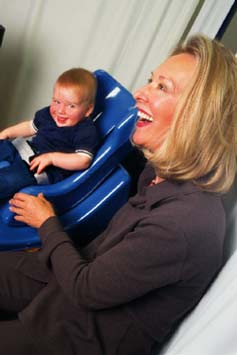 | |
|
Hey Baby!
THAT BUNDLE of joy the stork just dropped off might seem to be an unobservant little being, but guess again. Even at birth babies can discriminate their mother's voice from a stranger's. York developmental psychologist Maria Legerstee has found that by five months babies understand what they look and sound like. They can also differentiate themselves from other infants and inanimate objects (such as dolls). "I'm interested in how infants understand that we are mental beings, as well as physical ones, and how they learn to discriminate social objects [people] from things. By four months they already know the difference - they reach for objects, but call for people," says Legerstee. To find out how infants make discriminations in their world, Legerstee tested 51 five-month-old and 30 eight-month-old babies. She presented them with pre-recorded video films of their own faces, other infants and dolls (both moving and static images). The babies also listened to their own voices, other babies and various non-social sounds. She found five- and eight-month-olds stared longer at the other child when they watched videos (likely due to novelty and the extra concentration needed to identify the other child). Similarly, when the babies were played a recording of their own voices as well as another infant's, they looked longer in the direction of the new voice. Says Legerstee: "The attention babies pay to human faces, voices and movement indicates they see people as special. We suspect this is part of the process of developing a 'theory of mind'." |
|
Text Menu [ Home | Past Issues | Subscriptions | Contact Us | Site Map | Search Profiles ] |
